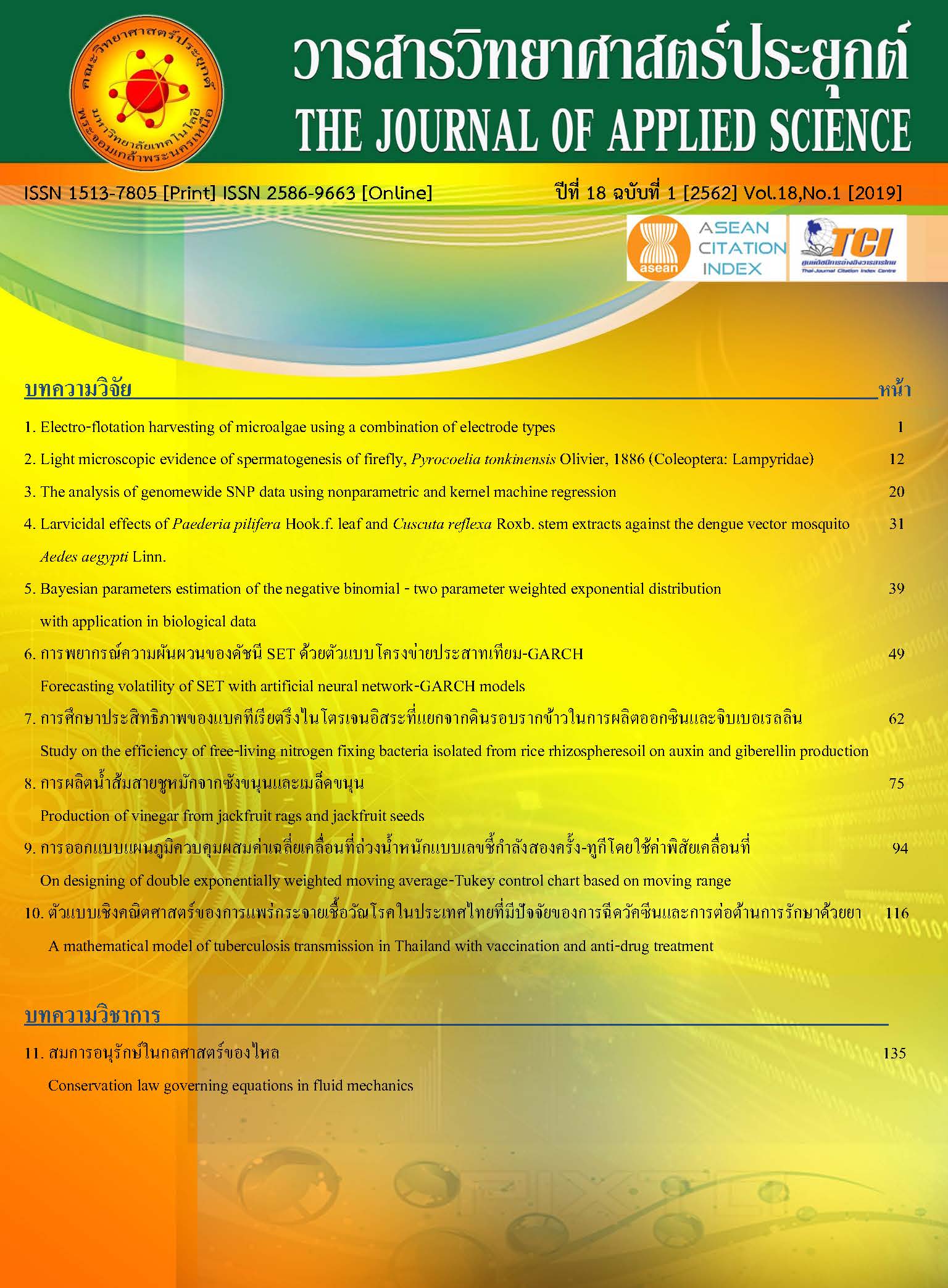Electro-flotation harvesting of microalgae using a combination of electrode types.
Keywords:
Dunaliella salina, harvesting, electro-flotation, stainless steel, graphiteAbstract
This study aims to search for a proper system for electro-flotation harvesting of microalgae Dunaliella salina with a minimization of metal contamination. The electro-flotation was realized by an application of constant electrical current via planar electrodes. An applied electrical current caused a cell aggregation and produced small bubbles which levitated cell clusters to form a foam layer containing concentrated microalgae on the top surface of the culture fluid. Since erosion induced by electrolysis did not occur for cathodes (negative electrodes), we tested the harvesting by using planar cathodes, lying in the bottom of the reactor, made from different materials and forms. For a given electrical current, all cathodes resulted in a similar harvesting efficiency as well as the energy consumption. Unlike the cathode, the anode (positive electrodes) usually erodes in the electrolytic process. To avoid contamination of released metal, we used only graphite plates as the anode. Different settings of graphite anode plates (located above the cathode) were studied. For a given electrical current, all cases of anode settings had a similar harvesting efficiency but the energy consumption increased with the distance between the anode and the cathode. For a given setup of electrodes, we showed that both the harvesting efficiency and the energy consumption increased with the applied electrical current. By considering the above results as well as the fact that the stainless steel plate is cheaper and easier to handle in comparison to the graphite plate, we suggest that a combination of graphite anode and stainless steel cathode is an appropriate set for microalgae harvesting with an avoidance of metal contamination. Furthermore, for a convenience of the collection of the levitated microalgae cells, the top surface should be leaved widely opened by setting the graphite anode plates near the wall of the reactor. Finally, we demonstrate a usage of the electrode combination for a large scale harvesting of the microalgae Dunaliella salina cultured with outdoor conditions in a salt production company located in Nakhon Ratchasima, Thailand.


